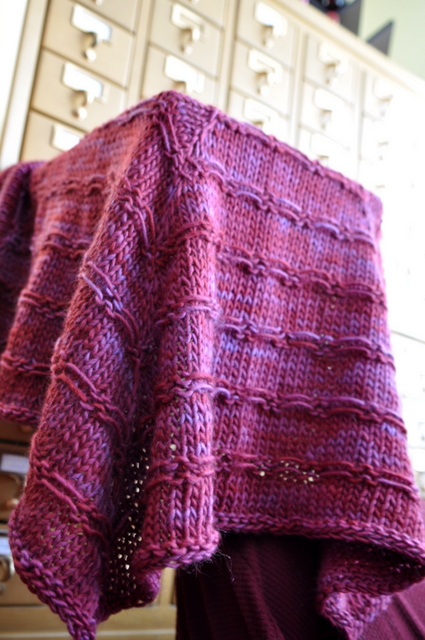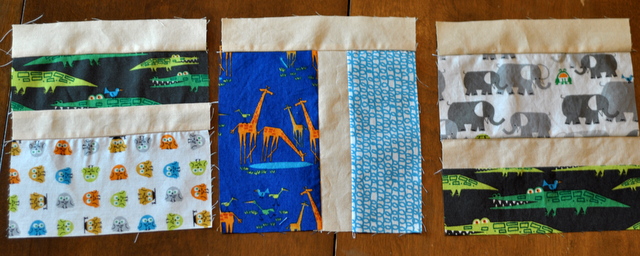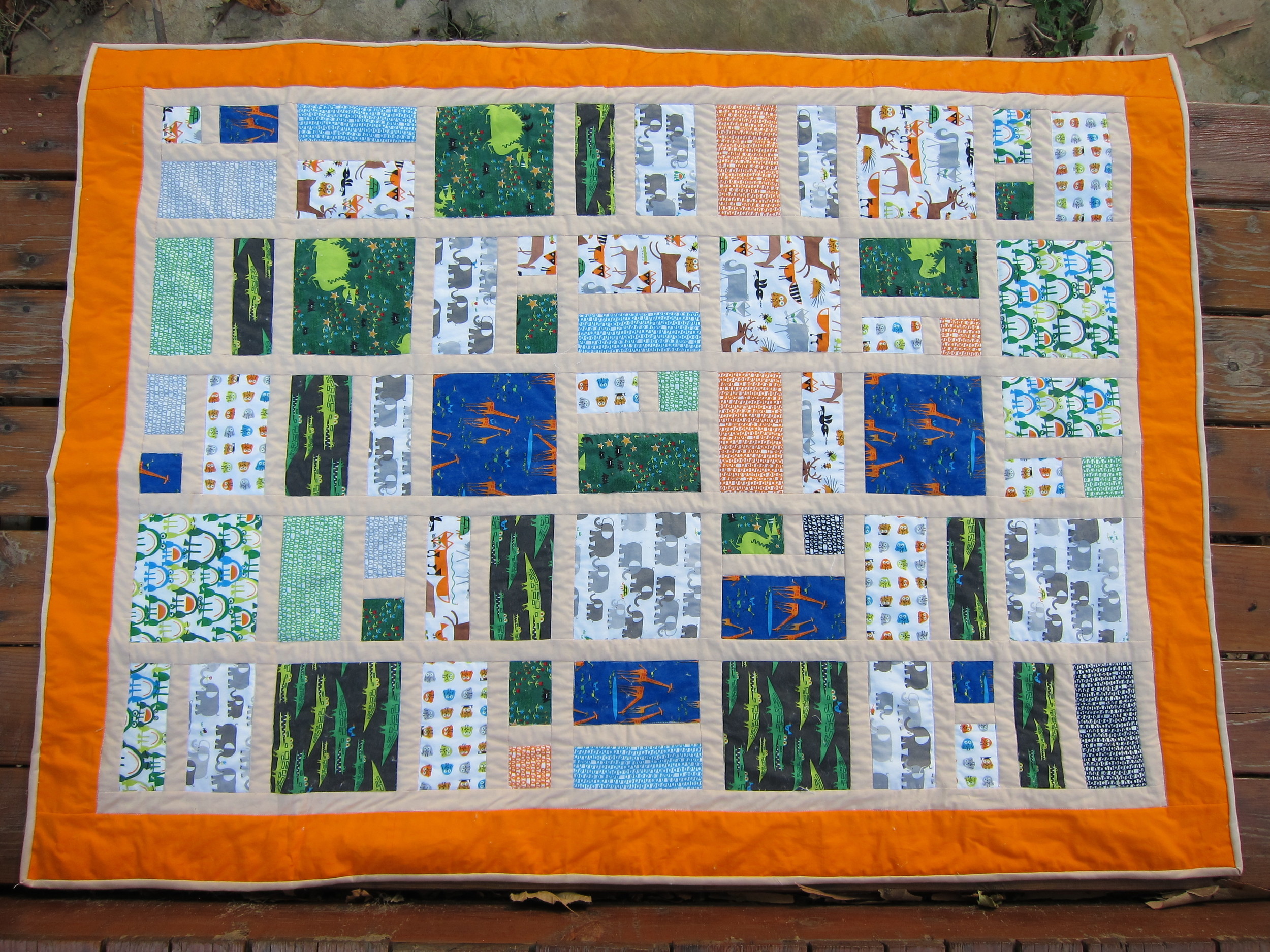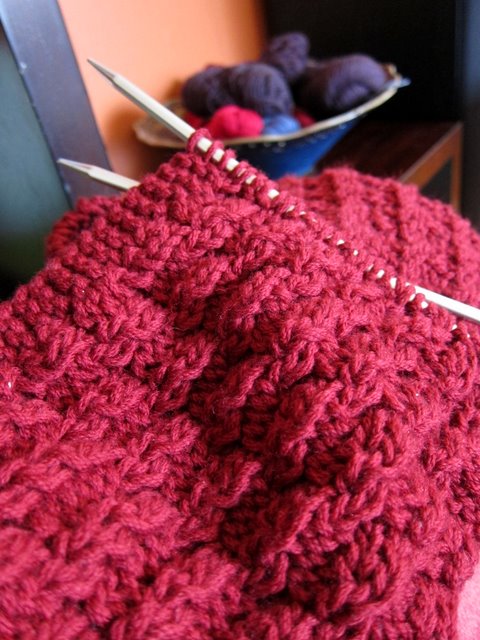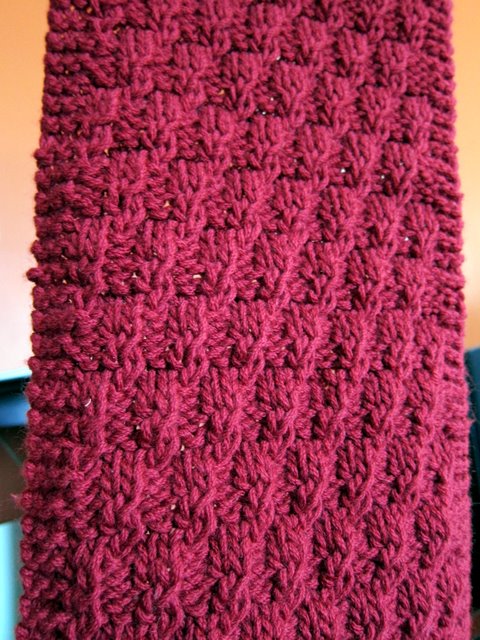The most exciting time of the year for any nerdy kid is the week before school starts. They spend the days unloading their backpack, loving looking at all school supplies, and reorganizing their crayon box. They reflect on the big questions - Dolphin folders are clearly the best for Science, but should rainbow unicorns be for Math or Social Studies? Oh, kids don't do that? No one else gets that excited about organizing? Angry Birds is ruining our youth.
One of the best things was the brand new packs of crayons and markers. The school supply list only required the basic marker set, but with enough whining Mom could be swayed to get a second set of markers. Bold colors. The best freaking colors on the planet - raspberry, emerald, azure, goldenrod. You had better recognize, kids who picked on me. There's a new pack of markers in town.
(at this point, you might have picked up on a few of the factors that contributed to the teasing)
I didn't realize until halfway through this quilt that I had borrowed my 8-year old self's favorite color pallet. I'm sure the next niece, Izzabella, will also love it, because the kids want to be just like yours truly.
Bold Colors Quilt
Finished size: 46″ square
Materials
- 1.75 yards white background fabric (44" quilters cotton)
- 1/3 yard each of four different color fabrics (44" quilters cotton)
- 50" piece of batting
- 1.5 yards 56" wide backing fabric
- 3/8 yard binding fabric
- Sewing thread and other notions
Making the Hourglass Blocks
This tutorial shows you how to make these as fast and easily as possible.
Cut
- From each of the colored fabrics cut seven 5.5" squares (one strip 5.5" x width of fabric, cut to seven 5.5" squares)
- From the white, cut twenty-eight 5.5" squares (four strips 5.5" x width of fabric, each cut to seven 5.5" squares)
Follow the linked tutorial to make 56 hourglass blocks. This is 2 more than you will ultimately need. Be sure to square them up to 4.5". This will cut out a lot of bulk and help your corners match up better.
Center square
From the white, cut one 7" square (A), one 4" square (B), and sixteen 5" squares (C). Cut each square in half on the angle.
Layout your central block starting with the hourglass blocks, making sure to turn them so that colored edges touch white edges. The blocks are placed on an angle with the white triangles filling in the edges to make it square.
There are nine rows of hourglass blocks. Starting in the lower left, the rows are:
- 2 blocks
- 4 blocks
- 6 blocks
- 8 blocks
- 10 blocks
- 8 blocks
- 6 blocks
- 4 blocks
- 2 blocks
Triangles A go in the lower left and upper right. Triangles B in the upper left and lower right. Triangles C fill in the sides.
Sew each column of blocks together. Press the seams, and then sew the strips together to create the square. I recommend leaving the blocks laying out on the floor as you do this, because it can be easy to get a triangle rotated incorrectly.
Press the seams like crazy.
Add a white border
From the white, cut two 3.5" x 32" strips and two 3.5" x 38" strips.
Sew the shorter strips to the top and bottom. Press seams.
Sew the longer strips to the sides.
Press seams.
1" squares border
This is where you risk becoming a crazy person. A bunch of 1" blocks sounds like it wouldn't be that bad, but you might go nuts halfway through. Fair warning.
Cut 1.5" x length of the fabric
- 12 from the white fabric
- 3 from each of the colored fabrics
Sew a white strip to each of the colored strips. Press the seams toward the color.
Sew each of these strips lengthwise to another one, so that you have six pieces of fabric that are striped color - white - different color - white.
Press them very well.
Cut the strips down to 1.5" x 5" rectangles.
Sewing along the 5" side, join 38 of these into a long strip. Do your best to line up seams. Be sure that the blocks always alternate white - color - white - color. Repeat until you have four total border pieces.
Sew an hourglass block to each end of two of these border pieces. Press the borders like crazy.
Pin the borders without the hourglass ends to the top and bottom of the quilt. Sew them on and press. Sew the remaining borders to the other side.
Press the whole quilt top well.
Back, bind and quilt.










